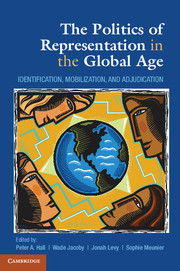Book contents
1 - Introduction
The Politics of Representation in the Global Age
Published online by Cambridge University Press: 05 June 2014
Summary
This is a book about how processes of political representation work, whom they represent, and how they develop over time. We think of these as processes in which interests are formed, given a voice within organizations and polities, and influence the decisions of governments. As such, these processes are at the heart of how democracies are organized and governed. As Suzanne Berger has observed, “political representation involves both the organizations that link citizens to government and the political ideas and programs that structure how the world works.” Few processes are more important to the operation of democracy. Democratic governance is a system in which choices are made and compromises forged among competing interests, and the quality of a democracy is determined, in large measure, by how well the views of the people are represented by its governing institutions.
Appropriately, therefore, the study of representation has always been central to political science. How best to accomplish it has been a core question for theorists of democracy since the eighteenth-century debates of Edmund Burke and the authors of The Federalist Papers up to those that join contemporary analysts, such as Robert Dahl (1972), Bernard Manin (1977), and Pierre Rosanvallon (2011). This has never been an easy question to resolve because even the most democratic governments are imperfect mirrors for the views of the people (Pitkin 1984). Of more concern to us, however, are debates among empirical analysts of politics about how existing processes of representation work. How are interests formed? How do they acquire influence, and how are conflicts among them resolved?
- Type
- Chapter
- Information
- The Politics of Representation in the Global AgeIdentification, Mobilization, and Adjudication, pp. 1 - 26Publisher: Cambridge University PressPrint publication year: 2014
References
- 1
- Cited by



